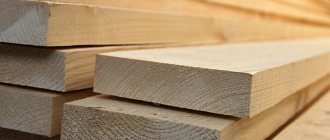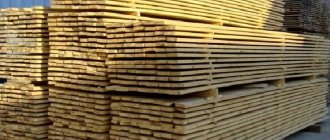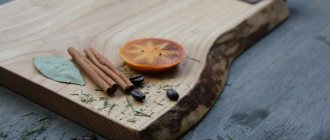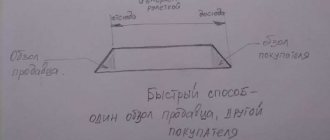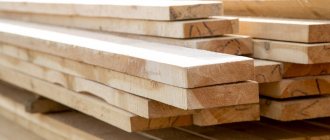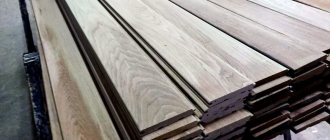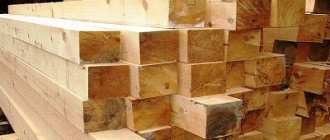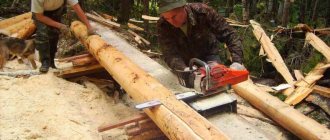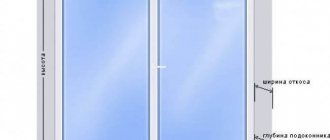Although the age of high technology is already on the threshold, natural materials are still in demand. Including inch - this is what builders call one of the types of boards.
The name comes from the inch, which is 25.4 mm. Domestic manufacturers omitted tenths of the thickness, but the basic size remained.
GOST is responsible for the accuracy of standard length and width parameters . Let's take the standard as a basis and draw up a reference table. It would not be amiss to provide calculation formulas for finding the amount of lumber and cubic capacity.
Board size tables 25
Let's start the calculations by presenting tabular data. They are designed for many types of boards, but we are only interested in one - twenty-five. The information is easy to use. The first column shows the thickness and the second column shows the width.
The typical length is 4 or 6 meters, but on sale you can find materials with arbitrary sizes: from a meter and above.
Coniferous GOST 24454-80
| Thickness, mm | Width, mm | Length, mm |
| 25 | 75 | 4000; 6000 |
| 100 | ||
| 125 | ||
| 150 | ||
| 175 | ||
| 200 | ||
| 225 | ||
| 250 | ||
| 275 |
Hardwood lumber GOST 2695-83
| Thickness, mm | Width, mm | Length, mm |
| 25 | 60 | 500; … 6500 |
| 70 | ||
| 80 | ||
| 90 | ||
| 100 | ||
| 110 | ||
| 130 | ||
| 150 | ||
| 180 | ||
| 200 |
At timber trading centers, you can agree on sawing on individual terms. Up to 2 or 3 m.
Recommendations for selection
The selection criteria depend on the purpose of using the board.
When buying an inch, consider the following tips .
- If the boards are used outdoors , choose lumber without deep cracks. It is better without knots, since the latter reduce mechanical strength.
- If you need a board that can withstand heavy loads , pay attention to the growth rings. If they are parallel to each other and do not taper, this means that the board is cut from the hardest part of the trunk.
- For construction work such as lathing or formwork, you do not need to buy first-class raw materials.
- If the boards are intended for stairs, flooring, wall cladding, you need to select material with even cuts, without chips. If there are places on the inch with traces of insect work, you should refuse the purchase.
Cubic capacity indicators
According to the standard, the cubic meter is used as a unit of measurement for the volume of boards. It is 1x1x1 m, that is, lengthxwidthxthickness.
To prevent readers from multiplying, we have prepared a table with standard parameters.
The list includes not only the cubic capacity, but also the quantity with footage (area) of softwood lumber:
| Dimensions, mm | Piece volume, m³ | Pieces per 1 m³ | Area, m² |
| 25×75×6000 | 0,011 | 90 | 40,5 |
| 25×100×6000 | 0,015 | 67 | 40,2 |
| 25×125×6000 | 0,018 | 55 | 41,2 |
| 25×150×6000 | 0,0225 | 44 | 39,6 |
| 25×175×6000 | 0,026 | 38 | 39,9 |
| 25×200×6000 | 0,03 | 33 | 39,6 |
| 25×225×6000 | 0,033 | 30 | 40,5 |
| 25×250×6000 | 0,0375 | 26 | 39 |
| 25×275×6000 | 0,041 | 24 | 39,6 |
| 25×75×4000 | 0,0075 | 133 | 39,9 |
| 25×100×4000 | 0.01 | 100 | 40 |
| 25×125×4000 | 0,0125 | 80 | 40 |
| 25×150×4000 | 0,015 | 66 | 39,6 |
| 25×175×4000 | 0,0175 | 57 | 39,9 |
| 25×200×4000 | 0,02 | 50 | 40 |
| 25×225×4000 | 0,0225 | 44 | 39,6 |
| 25×250×4000 | 0,025 | 40 | 40 |
| 25×275×4000 | 0,0275 | 36 | 39,6 |
Similar indicators for hardwood lumber:
| Dimensions, mm | Piece volume, m³ | Pieces per 1 m³ | Area, m² |
| 25×60×6000 | 0,009 | 111 | 39,96 |
| 25×70×6000 | 0,0105 | 95 | 39,9 |
| 25×80×6000 | 0,012 | 83 | 39,84 |
| 25×90×6000 | 0,0135 | 74 | 39,96 |
| 25×100×6000 | 0,015 | 66 | 39,6 |
| 25×110×6000 | 0,0165 | 60 | 39,6 |
| 25×130×6000 | 0,0195 | 51 | 39,78 |
| 25×150×6000 | 0,0225 | 44 | 39,6 |
| 25×180×6000 | 0,027 | 37 | 39,96 |
| 25×200×6000 | 0,03 | 33 | 39,6 |
| 25×60×4000 | 0,006 | 166 | 39,84 |
| 25×70×4000 | 0,007 | 142 | 39,76 |
| 25×80×4000 | 0,008 | 125 | 40 |
| 25×90×4000 | 0,009 | 111 | 39,96 |
| 25×100×4000 | 0,01 | 100 | 40 |
| 25×110×4000 | 0,011 | 90 | 39,6 |
| 25×130×4000 | 0,013 | 76 | 39,52 |
| 25×150×4000 | 0,015 | 66 | 39,6 |
| 25×180×4000 | 0,018 | 55 | 39,6 |
| 25×200×4000 | 0,02 | 50 | 40 |
Lengths of 6 and 4 meters are standard. It happens less. Just for such a case, there are formulas for calculations.
Formulas for calculation
The table may not have enough individual sizes, so we suggest that you familiarize yourself with three calculation formulas for volume, cubic capacity and area. Let's take the following characteristics as an example:
25×150×4000 mm.
Millimeters are not suitable for us, so we convert them into meters, dividing by 1000:
0.025×0.15×4 m.
The formula for obtaining the volume of one piece will be this (multiply the sides and thickness):
0.025×0.15×4=0.015 m³.
To calculate the number of pieces in a cube, divide 1 m³ by volume:
1 m³/0.015 m³=66 pcs.
It remains to obtain the area of the material in one cube. To do this, multiply the length by the width, and multiply the result by the number of pieces:
(0.15×4)×66=39.6 m².
The arithmetic is not very simple, but it will allow you to estimate in advance how much material you need. Now let’s look at the question of which board is better to use: edged or unedged?
Permissible load
Engineering board: what is it, what are its main pros and cons, installation methods
When designing a building frame, roof truss system, construction trestles or walkways, it is important to know how much weight one edged board can support. At the same time, the answer to this question is unambiguous, i.e.
it is almost impossible to say how many kg you can put on the board before it breaks. The permissible load on an edged board depends on many factors, for example:
- Grade of material, presence and relative position of defects.
- Degree of drying of the material.
- Arrangement of wood fibers.
- Load application points.
The approximate load can be determined using reference tables or calculator programs provided on the websites of lumber manufacturers. The basis for these calculations is SNiP II-25-80 “Norms for the design of wooden structures,” but performing such a calculation is a complex task that requires engineering knowledge. Based on the tables, you should choose boards with a margin of 20-25% of the calculated weight.
Breeds
Two types of twenty-five are common on the domestic lumber market:
- Coniferous.
- Deciduous.
The first category is more durable, since the resins that make up the wood prevent the formation of fungi and mold.
Varieties
Boards are divided into grades from best to worst:
- Selected.
- First.
- Second.
- Third.
- Fourth.
Deciduous inch trees cannot boast of extreme durability. But they are quite suitable for indoor use. There are 3 varieties:
- First.
- Second.
- Third.
Legend
In the designation, the material is written in plain text (board, block, timber), then a number indicating the grade, type of wood (coniferous or individual species - pine, spruce, larch, cedar, fir), cross-sectional size in mm. and designations of the regulatory standard.
Example: Board - 2 - pine - 40 x 150 - GOST 8486-86
Responsible manufacturers also indicate length and cubic capacity in their price lists, i.e.: Board - 2 - pine - 40 x 150 x 6000 - GOST 8486-86 Quantity per cube: 27 pcs
Kinds
Edged
The edged board is more suitable for finishing. Where accuracy and presentable appearance are needed. The difference from the unedged one is an even cut not only along the faces, but also along the edges. The material is used to solve the following problems:
- Sheathing of roofing systems.
- Upholstery of walls of frame buildings.
- Creation of stairs.
- Furniture manufacture.
Types of material and areas of application
To begin with, we will tell you how the products differ, this will help you when choosing, and then we will note for which designs this option is most appropriate to use.
Types of inch boards
All products of this type differ in the following main characteristics:
- The type of wood used for production can be almost any option - from the widespread pine and spruce, to more durable larch and cedar and even oak, beech and so on. A specific solution is selected depending on the specifics of the work being performed and the location where it is carried out, since external finishing is much more demanding in terms of reliability than internal finishing, and work in a bathhouse even involves extreme impacts on the material;
Advice! Do not skimp on the quality of the material for the bathhouse, as this determines how comfortable your stay in it will be.
- As noted in the commentary to the photo above, the most popular solution is an edged board, but if you need to save money and appearance is not particularly important, then we advise you to consider using unedged lumber, since its price is much lower, while other characteristics are almost the same , like more expensive analogues;
The most budget option is an unedged board
- When carrying out finishing work with your own hands, we recommend using a planed board, since its surface has already been processed, and you will not have to waste time and effort on sanding. An attractive appearance makes the elements more expensive, but the difference is not very large, and if the scope of work is large enough, then it is better to purchase a ready-made solution than to engage in labor-intensive processing afterwards;
- The next criterion, which in its significance occupies perhaps the most important place, is the moisture content of the material; almost all manufacturers sell an inch of natural humidity, but this indicator can vary in a wide range - from 15 to 50%. It is best to use an option with minimal humidity, as this guarantees little deformation during the drying process and minimal cracking;
- The size of an inch board is always the same, but its quality can be different, the main indicator of this criterion is the grade of the product; products of different grades are on sale, from the highest, in which there are practically no flaws, to other options in which the presence of flaws and even blue is allowed. Again, sometimes it makes sense to purchase a board with high humidity and stack it to dry naturally.
Stacking is done through bars with a cross section of 2-3 centimeters, this allows air to penetrate between all elements and ensures uniform drying
Areas of use
The inch board size is a very organic combination of small thickness and weight and fairly high strength; these characteristics determined the use of this lumber for the following purposes:
- The most widespread option is the installation of sheathing for pitched roofing systems. Moreover, if an inexpensive unedged option can be used under slate, then for a soft roof a continuous sheathing is required, the instructions for carrying out the work depend on what type of roof will be made, so decide on this criterion in advance in order to purchase the option that is needed;
This lathing is lightweight, yet its strength meets all reliability and safety requirements.
- In frame house construction, as well as in the construction of various types of extensions, the inch is also used very widely. The material is used in combination with timber, which makes it possible to give the system high strength;
- The construction of a subfloor is another area in which you cannot do without a twenty-five board; most often, a continuous flooring is installed, on which a vapor barrier material is subsequently laid and insulation is laid;
Advice! Do not forget to treat the material with antiseptic compounds for wood, this will increase their service life.
Inch subfloor is an excellent solution for any home
- Fences are also built from boards, shields are made and outbuildings are sheathed; this option can be used for almost any purpose.
How many edged boards are in 1 cube?
An edged board is a wood material, sawn on all sides along the faces and edges; it has a rectangular cross-section and straight, even edges. Due to its shape, it fits tightly into stacks with a minimum number of gaps. Therefore, the number of edged boards of a certain size in a cube is always standard - for example, 25x150x6000 boards will always be 44 units, and 50x150x6000 boards will always be 22. Thus, for edged boards of popular standard sizes, you can not do the same calculations every time, but use ready-made tables - cubic meters, where the volume of the board and the number of its units per cubic meter (cubic capacity) are indicated.
From the tables it is easy to find out that the following amount of boards with a standard length of 6 meters is contained in a cubic meter.
Thickness 20 millimeters (twenty):
- 100 mm wide – 83 pieces;
- width 120 mm – 69 pieces;
- 150 mm wide – 55 pieces;
- width 180 mm – 46 pieces;
- 200 mm wide – 41 pieces;
- 250 mm wide – 33 pieces.
Thickness 25 millimeters (twenty-five):
- 100 mm wide – 66 pieces;
- width 120 mm – 55 pieces;
- 150 mm wide – 44 pieces;
- width 180 mm – 37 pieces;
- 200 mm wide – 33 pieces;
- 250 mm wide – 26 pieces.
Thickness 30 millimeters (thirty):
- 100 mm wide – 55 pieces;
- width 120 mm – 46 pieces;
- 150 mm wide – 37 pieces;
- width 180 mm – 30 pieces;
- 200 mm wide – 27 pieces;
- 250 mm wide – 22 pieces.
Thickness 32 millimeters (thirty-two):
- 100 mm wide – 25 pieces;
- 120 mm wide – 43 pieces;
- 150 mm wide – 34 pieces;
- width 180 mm – 28 pieces;
- 200 mm wide – 26 pieces;
- 250 mm wide – 20 pieces.
40 millimeters thick (forty):
- with a side of 100 mm - 41 pieces;
- with a side of 120 mm - 34 pieces;
- with a side of 150 mm – 27 pieces;
- with a side of 180 mm - 23 pieces;
- with a side of 200 mm – 20 pieces;
- with a side of 250 mm - 16 pieces.
Thickness 50 millimeters (fifty):
- with a side of 100 mm - 33 pieces;
- with a side of 120 mm - 27 pieces;
- with a side of 150 mm - 22 pieces;
- with a side of 180 mm - 18 pieces;
- with a side of 200 mm - 16 pieces;
- with a side of 250 mm - 13 pieces.
It is important to note that for tongue-and-groove types of material (lining, blockhouse, imitation timber, flooring), which have protrusions and grooves for a more durable joining, calculations are carried out only for the working (visible) width, without taking into account tenons. Therefore, the same cubeturns are suitable for them as for edged boards.
How many 6 meters long boards are there in one cube?
- How many edged boards are in 1 cube?
- Number of unedged boards
- How to calculate?
When purchasing one of the most popular building materials - boards - you cannot do without knowing how many of them are contained in a cubic meter. After all, boards are measured in cubic meters, and sellers usually indicate the price for a given unit of volume. And calculations for construction, for example, how much material is needed for wall cladding, building a bathhouse or repairing a fence, are usually made in pieces.
In the article, we will look at how to quickly find out, using cube tables, how many pieces of edged and unedged boards of different sizes with a standard length of 6 m are contained in a cubic meter, and how to calculate the necessary numbers yourself for lumber of non-standard dimensions, or if there is no table at hand.
Calculation features
To calculate the number of pieces of sawn and planed boards per cubic meter, it is enough to remember only the formula for calculating the volume of a parallelepiped. This is exactly what a batch of boards from one to the required number of cubic meters is.
The board is not sold individually - it is sold in cubic meters: not every store or warehouse will accommodate a small retail buyer by selling him one or several copies. To calculate, do the following:
- multiply the length, width and thickness of the board by each other;
- divide the cubic meter by the resulting value.
The last value will most likely be fractional. For example, having ordered a board of 40*100*4000 m and finding that their number is 24.8, the user, in the case of a large volume of finishing work (if the project allows), can order 10 m3. Then the number of boards will be equal to the normal one - in this case it is 248 copies.

